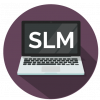Best Practices for using ACHs

Hello,
Our foundation is thinking of moving away from checks and utilizing ACHs to make our grant payments. I was wondering how other organizations that are using ACHs get the banking information from the recipients.
Thank you for your input.
Linda Cleveland
Comments
-
We are in the same boat, so following along to responses:)
1 -
We converted to ACH nearly two years ago and haven't looked back.
At LCF our process is as follows:
For new organizations
1. Any new granting organization that does not already have a banking profile is entered (by us) into our banking website. It's very quick to enter a new organization
2. The granting organization receives an email (from our Bank) that they need to set up their account
3. When setting up the ACH account, the nonprofit enters a keyword generated by us (it literally can be anything but we have a system).
4. After entering the keyword, the Nonprofit completes their profile by entering their routing and account number This is critical in my opinion. We don't want to store bank routing and account numbers on our database. The bank requests this from the grantee organization and we never store the routing and account info
5. We receive confirmation that the account has been confirmed by the organization
6. We do periodic follow up to make sure the account information is correct
For existing organizations
- . Once established (see steps above) it takes about 2 minutes to process an ACH grant
- We just locate the account on our bank website and enter the amount
- We approve the transfer
- We generate an email to the contact and request thank yous come to fund holders electronically. We scan and send any thank yous to donors so it makes it easier if we just have them send it electronically.
I am happy to answer any questions about our process.
There is one caveat to our system. If it's a large organization (e.g. University) we direct our bank to send a check to the organization. for example, we feel it would be difficult for a scholarship to go to the larger University account and for Financial Aid to track down the payment to match it up with the scholarship recipient. Heck, in the past even paper checks would go astray so we still process scholarships with a check but it is also done online and our bank sends the check. We send materials to the Financial aid offices via email to verify receipt
15 -
Thanks. This is very insightful!
1 -
On the flip side of this conversation, I work for the foundation of a large hospital system. I recently requested that a community foundation do an ACH transfer instead of writing a check. We are requesting this of all of our major donors. It means we have to have less staff in the office processing checks during this pandemic. I expect one of the outcomes is more wire transfers in the future as opposed to checks.
I applaud those who are being proactive in this regards!
Kent C. Weimer, Chartered Advisor in Philanthropy®
Director of Trusts, Estates and Gift Planning, Parkland Foundation
1 -
Following along as well as our bank is not helpful at all with us trying to do this, so we are "at sea" trying to figure out the most secure way to do this.
2 -
All this information is very helpful. I have a question that I'm wondering if other foundations have, and if so, how have you been dealt with it? For slight background, we are a small-staffed family foundation. As with others on this thread, we are considering moving toward wire transfers (ACH's).
Our internal rules and regulations require two signatures on checks over $2,000. Do any of you have this requirement and if so, is there a workaround for the two signature rule? What are best practices? We absolutely want everything to be squared away for our annual audit.
I appreciate in advance any and all suggestions/ideas.
Thank you,
Susan Haley, Dean & Margaret Lesher Foundation
0 -
Great question! We also require two signatures on checks. I am guessing that, once we figure out how to set up the ACH transfers, we would create an internal procedure that requires two officers to sign off on the transfer. We do that now with all banking transactions so I don't foresee that being a huge hurdle to accomplish.
2 -
I'm with @SheilaSteger on looking for more information on how to collect this information without involving our bank. Has anyone else figured out a way to collect the needed information and permissions from grantees securely, without the partnership of their bank?
5 -
We are just starting this process, so I don't know how it will shake out, but we are using a DocuSign form to collect the account and routing information.
2 -
We are just starting both Foundant and ACH payments, and also question when to obtain the bank information. Has anyone requested the bank info before grants are approved? We're concerned that if we wait until grants are awarded, it will take a while for some organizations to provide the info.
0 -
We are only doing ACH for grantees. We have them complete their contact and provide us with a void check.
2 -
We started doing ACHs with the pandemic. We have a direct deposit agreement PDF that the recipient completes and emails back to us (they can add password protection). We enter that info into our bank ACH processing system, save it, and destroy the PDF. We send the DD agreement to grantees along with the award letter in an email. They usually respond fairly quickly.
For any payments requiring second signature, we get the second signature via an email approval and include that as backup in the payment documentation, along with the ACH confirmation page.
4 -
Thanks! I'm glad to hear they respond quickly.
1 -
We opted to make our grant payments via bill.com. It allows for approvals on amounts to pay, so is a good internal control, and is free for the grantees so long as they set their account up for receipts only. We collect the grantee's bill.com information in a follow up form we assign to the applicant when the grant is approved; the auto email that is sent when the follow up form is assigned is our announcement of the grant. I've attached the question list for the form - see section 2 for the bill.com-related information we collect.
2 -
We have been doing grant payments via ACH since last May 2020. We process approximately 200 payments in bulk twice a year so our system is pretty straight forward. We utilize DocuSign to obtain banking information (post board approval) which is ultimately pulled out and transferred to our online banking portal. There is no manual entry on our end. We find that most grantees respond quickly (within 5 days) and after a gentle nudge, all but a couple (out of 180 payments) have everything in a few days after. Those payments are delayed as to not hold up everyone elses. Email reminders and strong language are helpful. :) I utilize the bulk functionality of DocuSign and our banking portal to do the heavy lifting; which in many foundation's cases, bulk isn't possible as payments are on going. Happy to discuss further if someone is interested in learning more about our process and happy to share documents.
6 -
Thank you for everyone's responses. We are looking into this now and your experiences are so helpful!
2 -
Thank you everyone! We're interested in moving to ACH payments and you've discussed a lot of options.
1 -
Thanks everyone for the input! One of the foundations I'm working with is interested in streamlining the collection of ACH information, and I wanted to share some findings after our research, both from a security and IT perspective, since that's my background. I hope it's beneficial for other community foundations!
Without an elegant way to automate this (ie, bulk import, direct input by end users, etc), most foundations follow a similar process where (i) someone sends in their ACH info to the foundation, (ii) someone at the foundation copies and enters this information manually, and (iii) the original source doc is destroyed. There are 3 main ways foundations seem to be doing this today:
1. Using a direct deposit authorization form (PDF)
2. Using an online tool such as Google Forms, DocuSign, Submittable, etc
3. Sending a voided check via postal mail
From a process perspective, #1 and #3 are the simplest, since they require the fewest number of steps.
From a security perspective, #3 is the least secure, and assuming #1 is password protected with a strong password, there isn't a material difference between #1 and #2 since they both use different forms of encryption to protect sensitive information. The biggest thing we want to avoid is transmitting confidential information over an unencrypted channel.
Hope this helps!
3 -
We, too, pay via ACH. The award notification is accompanied by three documents: (1) Grant Acknowledgement Form; (2) PDF-fillable ACH Authorization Form; and (3) Acknowledgement and Permissions Policy. Upon return of the first two documents, I begin the process of payment transmission with our bank. We're moving to DocuSign in 2024 so I searched the community to see how others have handled, for snafus, etc. Any comments and time savers are welcome. Thanks in advance.
3 -
We collect banking information from new grantees via email (I'm not thrilled by this, but haven't had a moment to figure out anything better, especially since we work with very small and very new organizations, some of which aren't particularly tech-savvy) or over the phone. That is then set up as an ACH payment with our bank, and I send them a heads-up before the funds are transmitted, and include a timeframe by which to expect the grant, with a note to let me know if there's an issue.
For recurring grantees, as part of their grant acknowledgement (which is just a form in Foundant), I've added a field that's the name of the bank they provided me and the last 2 digits of their account, and they have to check a box confirming whether that's still their banking information. If they say "no" then I follow up with them to get their new information.
It sounds like a lot of people are using DocuSign - I'll look into it as a secure option instead of email :)
2 -
@JessicaGebhard, thanks for keeping this conversation going. I simply queried using "DocuSign" and "ACH" to see what would come up. Right now I'm on a fact-finding mission as we will make the change to e-signatures in 2024. We, too, use Foundant. Their process and video seem straight forward, but we know there's always a way to learn from those who've travelled the path before. Input on DocuSign versions is also welcome. I'm thinking that the free version may be sufficient for our needs but know I don't need to be "pound foolish". The ED has already signed off a required expense.
We have two grant cycles per year so there's time to work out any kinks but I would like to pilot it with some Discretionary grants that most likely will occur prior our first grantmaking payments in June. I want to streamline and automate the process as best I can. Happy to brainstorm and pass along information I may receive from the meeting with the prior mentioned colleague.
Monica
monica@christopherff.org
1 -
We process all of our grants, whether annual grant cycle distributions or monthly donor advised fund grant requests, agency funds, etc., all are processed via ACH. We use DocuSign to collect the information as there is an option to encrypt it, so if someone does access a copy, they can't see the actual numbers on the form. We enter the information into Foundant and our finance director sets the account distribution up through our bank's secure site. This has worked well for us, took a little while for all grantees to get on board, but we have been processing this way for about a year and saves a lot of time and expense.
1 -
@JulieLooper, thanks for your response. I'm in the midst of Discretionary payouts from yesterday before I continue with our second grant cycle determinations (also last night). I know grantees appreciate getting money sooner!
I've not had any problems obtaining the ACH information, just want to streamline it even more as I'm collecting, verifying, and coordinating with the bank. Just wanted to know more about what I've not yet done from someone who has. Would love a quick conversation/Zoom, but obviously not yet since I need to get through this cycle. Thanks.
Monica
1 -
We also ran into a huge audit situation for 2023 because of our move to ACH payments. Apparently, the auditors consider the email we sent out alerting organizations of their award and follow-up needs as a commitment date. We had 35 that we approved in December 2023, but because of holiday delays, we didn't receive payment until January 2024. This was reported to our board as negligence on our part because we committed to an amount but didn't pay it in the same year. We had no idea the email date had any significance because it was the first time we ever sent a notification that way.
It's been a headache, and we are still trying to figure out a workflow that will meet both the auditor's and our needs.
Has anyone else had this issue happen and wants to offer advice?1 -
Our Foundation's policy is to record a grant once we notify the grantee of the award, and that policy is in one of our audit footnotes.
Each December, we approve a very large grant that we pay the following year. We want to record it in the year paid, so we don't notify the grantee until the first business day in January.
We record the grant on Foundant as a draft approval in December. That way, the applicant does not get any emails regarding the status. Then on the first business day in January in Foundant, we approve the grant and send the standard grant award email. The auditors can then get a date-stamped copy of that email.
2 -
This has been a great thread to follow. My foundation is preparing to transition to ACH payments through Bank of America, and I’d love to hear any suggestions on making this happen. We use Foundant’s GLM and are looking for the best way to verify routing and account numbers. Any insights or tips would be greatly appreciated—thank you!
1 -
@DaynellMarbury Great question
With some of the newer technologies available, in general I've seen organizations take one of three approaches:
- User submits routing and account information to the foundation, then use microdeposit(s) or a solution like Plaid to verify
- User submits routing and account information to the foundation, and a representative from the foundation contacts the user over a different channel (ie phone call) and verifies over the phone
- Foundation moves towards a solution that is more self-service, for example, Bill.com or possibly through their banking app, which eliminates the need for verification because the user has entered it directly
I've worked with a lot of foundations over the past 3-4 years, so assuming BoA still requires verification, the most common solution I've seen is probably #2 since it is the easiest, cheapest, etc — just requires manual effort every time a new grantee is added or changes their bank account etc.
Hope this helps!
Justin
3 -
We found the best ways to verify routing and account numbers is by using either a voided check, or a bank confirmation on bank letterhead. Third party verification helps avoid mistakes or misrepresentations. (When we first began using ACH payments, around 10% of applicants made errors in bank names, routing or account numbers. Yikes!). We pay mostly the same groups annually so input it directly into our bank's ACH system to be saved for each payee. Each time we receive an application, we ask applicants to confirm that the bank account hasn't changed. If you have many new grantees you'd have to find a different method.
We've had a few issues with large organizations, such as schools. Some departments ask for a paper check due to the time it would take for them to receive credit for the ACH from their admin. One asked that we call a specific employee so that the organization would even accept the ACH funds on the scheduled date. So you'll probably still be making some payments by check.
Good luck!
Bonnie
2 -
Has anuone had difficulty with the exported csv file?
Specifically, column D formatting is scientific number, and it needs to be TEXT for our bank upload.
We have tried converting it and saving the file – but the Receivers routing number keeps reverting to scientific “E+11” format.Please help – thank you, Jackie
1

























